Search the Special Collections and Archives Portal
Search Results
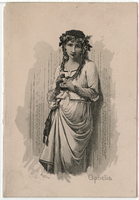
Sweet's Hotel five o'clock dinner menu, Sunday, November 16, 1884
Date
Archival Collection
Description
Text
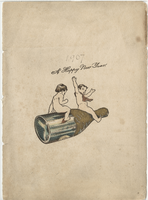
New Year's 1907, menu, Kaiserhof
Date
Archival Collection
Description
Note: Menu was originally bound with cord. Illustration on cover of two infants atop a champagne bottle. "1907" is handwritten on the cover. German eagle emblem on page 2. Includes wine list Menu insert: Wine lists; Spirits Lists; Beer lists Restaurant: Hotel Kaiserhof (Essen, Germany) Location: 266-274 Clark St., Chicago, Illinois, United States
Text
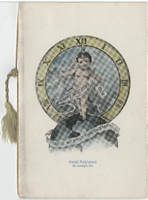
New Year's 1909, menu, Hotel Robidoux
Date
Archival Collection
Description
Text
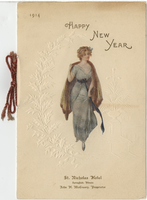
St. Nicholas Hotel, New Year's dinner menu, 1914
Date
Archival Collection
Description
Text
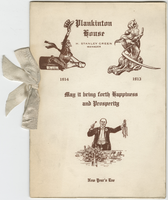
Plankinton House, New Year's Eve dinner, 1913
Date
Archival Collection
Description
Note: White ribbon at menu spine Menu insert: Wine lists; Music Programs; Toasts Restaurant: Plankinton House Location: Milwaukee, Wisconsin, United States
Text
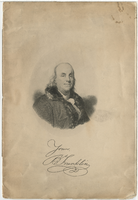
Celebration of the 183rd anniversary of Benjamin Franklin by the Typothetae of Chicago, dinner menu, January 17, 1889, at Tremont House
Date
Archival Collection
Description
Text
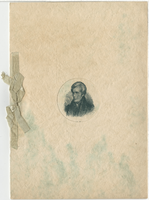
Sherman House menu, Monday evening, January 8, 1906
Date
Archival Collection
Description
Text
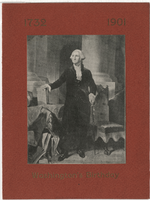
Washington's birthday at the Hotel Atlas, menu, Friday, February 22, 1901
Date
Archival Collection
Description
Text
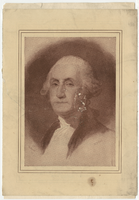
Washington's birthday celebration, menu, Monday, February 22, 1904 at the auditorium of the Union League Club
Date
Archival Collection
Description
Text
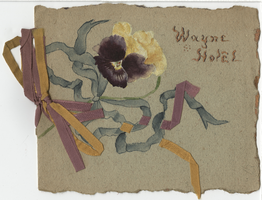
Wayne Hotel Easter Sunday menu, April 17, 1892
Date
Archival Collection
Description
Text
